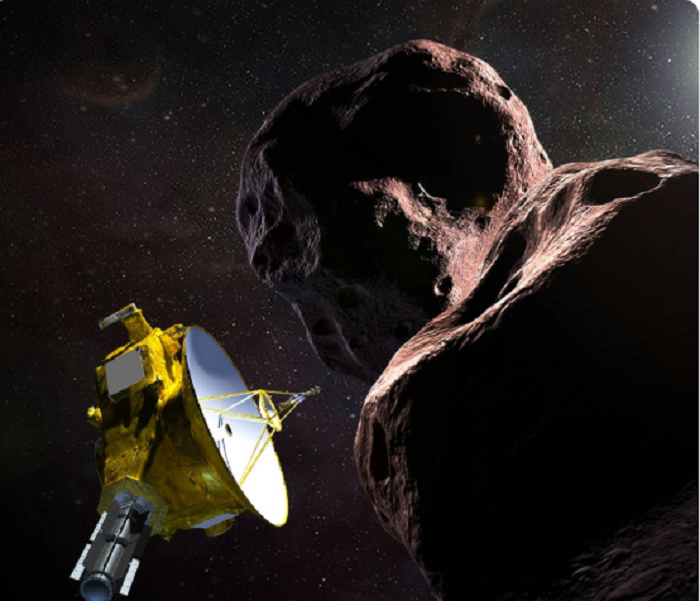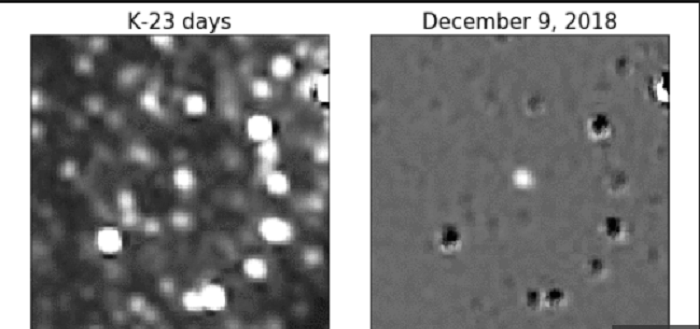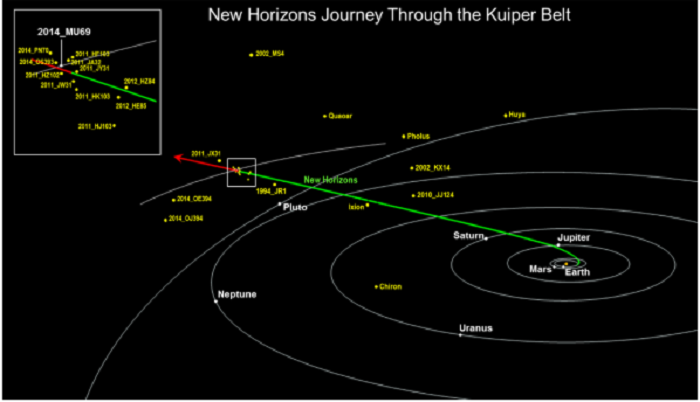Check out NASA’s big plan for this New Year’s Eve

December 22: NASA’s New Horizons spacecraft is checked to be healthy and on final approach to explore Ultima Thule in the Kuiper Belt. On New Year’s Eve and New Year’s Day, New Horizons will swoop three times closer to “Ultima” than it flew past Pluto! With the epic upcoming exploration of Ultima Thule and that New Horizons, NASA is all prepared to make history at the holidays.
For those who don’t know, Ultima is 100 times smaller than Pluto, but its scientific value is incalculable. According to NASA, it was formed 4.5 or 4.6 billion years ago, 4 billion miles from the Sun. It’s been stored at that enormous distance from the Sun, at a temperature of nearly absolute zero, ever since, so it likely represents the best sample of the ancient solar nebula ever studied. Nothing like it has ever been explored. Its geology and composition should teach us a lot about how these building blocks of small planets like Pluto were formed.

On Saturday December 15, the New Horizons hazard watch team concluded its work, having found no moons or rings in the path of New Horizons on its planned closest approach to Ultima. With that information and a unanimous finding, it informed NASA that they are “going” to fly by Ultima on the trajectory that yields the best science. As a result, New Horizons will approach to within 3,500 kilometers of Ultima early on New Year’s Day. There is no longer any chance they will divert to a farther flyby distance with consequently lower-resolution images. Just yesterday, New Horizons conducted another small trajectory correction engine burn to help them home in on Ultima.

This mission of flying by Ultima to see a Kuiper Belt object up close for the first time is considered to be special for mainly two reasons. First, based on its orbit type, we know that Ultima was formed 4 billion miles away, way out where New Horizons is. That means Ultima, which is officially named 2014 MU69, was formed in the middle of the Kuiper Belt, where temperatures are close to absolute zero.
Secondly, because of where it was formed and the fact that Ultima is not large enough to have a geologic engine like Pluto and larger planets, it is expected that Ultima is the most well-preserved sample of a planetary building block ever explored. In effect, Ultima should be a valuable window into the early stages of planet formation and what the solar system was like over 4.5 billion years ago, as told by Bill Keeter.
The New Horizons team confirmed on December 18 that the spacecraft is on target to fly within just 3,500 kilometres of the frozen object at 12:33 a.m. EST on January 1 which is even closer than the probe approached Pluto when it passed that dwarf planet within 7,800 miles. Also, by studying the object, researchers will learn about the earliest days of the solar system, of which Ultima Thule is likely a deep-frozen relic. Researchers so far think it is reddish-coloured and about 37 km wide, but they are prepared to learn a lot more after New Horizons takes a look.